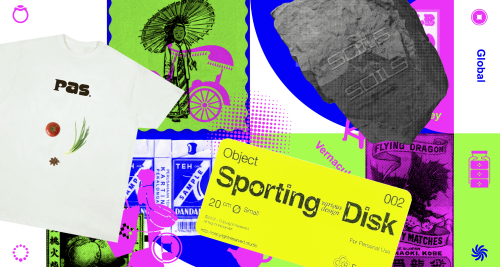The Long Road to Finding Identity and the Decision to Become a Full-Time Artist
It’s often a long winded journey to discovering one’s artistic identity. Such was the experience of Ardhira Putra. His visual style, which is strongly tied with Japanese pop culture along with the blend of vibrant colors present in Ardhira’s work, did not appear out of thin air. Childhood nostalgia and an ideal working pattern are a few of the key factors in the search for said identity, including his decision to become an artist full-time.
Growing up in the era of widespread Japanese pop culture in the 90s, Ardhira clung on to the visual style distinct to Japan at the time through game consoles and anime. As he grew older, the arrival of numerous music videos airing the MTV channel piqued Ardhira's interest in music and cinema. Like many young people at that time, he was exposed to the presence of mainstream music and the spread of distribution outlets. In a way, this also introduced him to graphic design. Receiving full support from his parents, Ardhira was able to pursue his interest academically. After graduating from high school, Ardhira continued his studies at the Animation Film Department at Multimedia University, Malaysia. He felt that this department was quite accommodating to his various preferences.
While studying and living in Malaysia, Ardhira dedicated a lot of his time towards his career. Through internship opportunities and working there, he gained a lot of career experience, especially related to industry. Ardhira himself had just discovered motion graphics as the right medium for his work when he was working for Motiofixo. "That's when I was able to distinguish between animation and its sub[-disciplines]. Actually, what I really like is motion graphics because it still has strong graphic design and animation [influences]. Motion graphics are often used for title sequences, film openings, TV bumpers. Some [that have used motion graphics] include MTV Idents and music videos in the 2000s. That’s all motion graphics. That’s where I started to get interested in motion graphics. So I started poking around," explained Ardhira.
Feeling like he got all he could out of living and working in Malaysia, Ardhira returned to Indonesia to work at Pijaru as a senior motion graphics officer and also served as a director. There, Ardhira created a myriad of motion graphic explorations through several video content and short films. Moreover, his short film entitled Surat untuk Jakarta (2016) received the Best Animated Film award at the 2016 Indonesian Film Festival. However, Ardhira found himself getting bored after five years in the industry. “I felt like I was constantly following the commercial world. Like I was just following what was trending. "Meanwhile, I seemed to have lost my identity in my work," he explained. Thus, Ardhira began to seek his identity with the encouragement of fellow creative practitioners who were able to build a career with the unique identity each of them carried.

Ardhira elaborated, "I tried to trace back what I actually liked. I actually want to create work related to modern lifestyles. Something more relaxed that I don't really have to put enormous effort into meditating on. I wanted to try being like a child who draws whatever they like. Designers are always problem solving." His incidental discovery of an old Japanese magazine in a market in Bandung brought him back to his childhood and led to his exploration of the distinct Japanese visual style as a creative identity.
The opportunity to work individually came in 2017. A friend of Ardhira's, the music video director for the band Barefood, asked him to make a 20 second animation for one of their music videos. Given the freedom, Ardhira tried to explore and began pouring new material into the video. In 2019, the work was featured at GIF FEST in Singapore. He revealed, "That's where I started to feel confident. It turns out that my 20 second animation can be appreciated like this. From there, the domino effect brought me to the projects that followed." Hence, Ardhira solidified his decision to become a full-time artist.
His collaboration with many parties, especially musicians, from outside Indonesia actually began with him making animations for Macross 82-89 on Instagram on a lark. This work received a positive response from the musician and led to a professional collaboration between the two. “From there I met musicians who were in the same genre, but, maybe from an experience point of view, could be considered ‘bigger’. So suddenly there were bigger budgets, it got more proper, they had vinyls, they’re under management. From this musician and suddenly to another. I got to know the others, so I ended up going around in that area," Ardhira explained.
His collaborations with Epik High, Sony Music Japan and Niagara Records, and even MTV in the US goes to show that his long-winded journey to find his identity as an artist has paid off. Ardhira himself is quite strict in screening colleagues, both in terms of creative freedom and work systems. On the other hand, he is also open to many collaboration opportunities, especially with domestic creative practitioners. Not just stopping at motion graphics and digital images, in the future Ardhira hopes to continue exploring many media, especially physical ones. He has released three print works and is developing his first publication.














